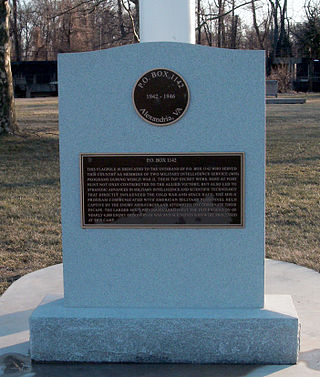
The Peenemünde Army Research Center was founded in 1937 as one of five military proving grounds under the German Army Weapons Office (Heereswaffenamt). Several German guided missiles and rockets of World War II were developed by the HVP, including the V-2 rocket. The works were attacked by the British in Operation Crossbow from August 1943, before falling to the Soviets in May 1945.

The Joint Intelligence Committee (JIC) is an interagency deliberative body of the United Kingdom responsible for intelligence assessment, coordination, and oversight of the Secret Intelligence Service, Security Service, GCHQ, and Defence Intelligence. The JIC is supported by the Joint Intelligence Organisation under the Cabinet Office.

Wernher Magnus Maximilian Freiherr von Braun was a German and American aerospace engineer and space architect. He was also a member of the Nazi Party and Allgemeine SS, as well as the leading figure in the development of rocket technology in Nazi Germany and later a pioneer of rocket and space technology in the United States.
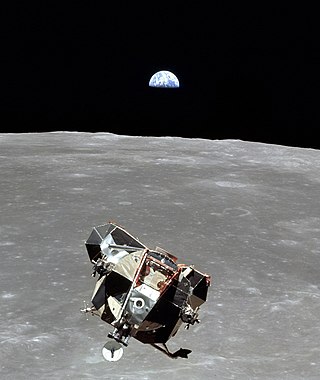
Science and technology in the United States has a long history, producing many important figures and developments in the field. The United States of America came into being around the Age of Enlightenment, an era in Western philosophy in which writers and thinkers, rejecting the perceived superstitions of the past, instead chose to emphasize the intellectual, scientific and cultural life, centered upon the 18th century, in which reason was advocated as the primary source for legitimacy and authority. Enlightenment philosophers envisioned a "republic of science," where ideas would be exchanged freely and useful knowledge would improve the lot of all citizens.

Operation Paperclip was a secret United States intelligence program in which more than 1,600 German scientists, engineers, and technicians were taken from the former Nazi Germany to the U.S. for government employment after the end of World War II in Europe, between 1945 and 1959. Conducted by the Joint Intelligence Objectives Agency (JIOA), it was largely carried out by special agents of the U.S. Army's Counterintelligence Corps (CIC). Many of these personnel were former members and some were former leaders of the Nazi Party.

Hans Kammler was an SS-Obergruppenführer responsible for Nazi civil engineering projects and its top secret V-weapons program. He oversaw the construction of various Nazi concentration camps before being put in charge of the V-2 rocket and Emergency Fighter Programs towards the end of World War II. Kammler disappeared in May 1945 during the final days of the war. There has been much conjecture regarding his fate.

Defence Intelligence (DI) is an organisation within the United Kingdom intelligence community which focuses on gathering and analysing military intelligence. It differs from the UK's intelligence agencies in that it is an integral part of a government department – the Ministry of Defence (MoD) – rather than a stand-alone organisation. The organisation employs a mixture of civilian and military staff and is funded within the UK's defence budget. The organisation was formerly known as the Defence Intelligence Staff (DIS), but changed its name in 2009.

Heinz Haber was a German physicist and science writer who primarily became known for his TV programs and books about physics and environmental subjects. His lucid style of explaining hard science has frequently been imitated by later popular science presenters in Germany.
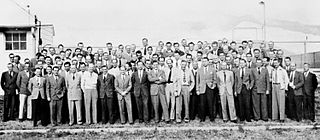
Bernhard Robert Tessmann was a German expert in guided missiles during World War II, and later worked for the United States Army and NASA.
A Joint Intelligence Center (JIC) is a focal point for military intelligence gathered by different intelligence agencies and administered by the Defense Intelligence Agency (DIA). The intelligence center of the joint force headquarters. The joint intelligence center is responsible for providing and producing the intelligence required to support the joint force commander and staff, components, task forces and elements, and the national intelligence community.

Ernst Stuhlinger was a German-American atomic, electrical, and rocket scientist. After being brought to the United States as part of Operation Paperclip, he developed guidance systems with Wernher von Braun's team for the US Army, and later was a scientist with NASA. He was also instrumental in the development of the ion engine for long-endurance space flight, and a wide variety of scientific experiments.

Magnus "Mac" Freiherr von Braun was a German chemical engineer, Luftwaffe aviator, rocket scientist and business executive. In his 20s he worked as a rocket scientist at Peenemünde and the Mittelwerk.
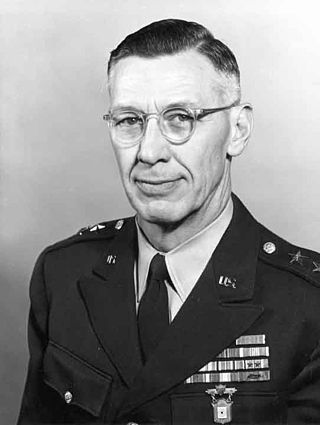
Major General Holger Nelson Toftoy was a United States Army career officer instrumental to the development of the United States' early rocketry after World War II, such as the Redstone missile. He persuaded senior officers to bring German scientists to the US after the war, to make use of their expertise, and supervised the relocation of more than 119 scientists.
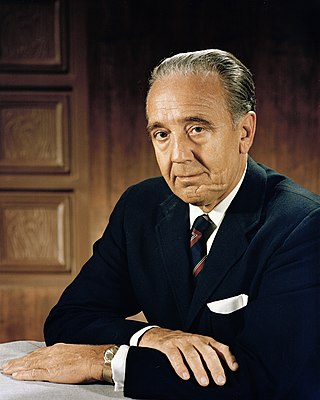
Kurt Heinrich Debus was a German-American rocket engineer and NASA director. Born in Germany, he was a member of the Schutzstaffel (SS) during World War II, where he served as a V-weapons flight test director. Following the war, he was brought to the United States via Operation Paperclip, and directed the design, development, construction and operation of NASA's Saturn launch facilities. He became the first director of NASA's Launch Operations Center, and, under him, NASA conducted 150 launches of military missiles and space vehicles, including 13 launches of the Saturn V rocket as part of the Apollo Moon landing program.

Central Continental Prisoner of War Enclosure No. 32, code-named Ashcan, was an Allied prisoner-of-war camp in the Palace Hotel of Mondorf-les-Bains, Luxembourg during World War II. Operating from May to August 1945, it served as a processing station and interrogation center for the 86 most prominent surviving Nazi leaders prior to their trial in Nuremberg, including Hermann Göring and Karl Dönitz.

The National Aeronautics and Space Administration (NASA) was created in 1958 from the National Advisory Committee for Aeronautics (NACA), and other related organizations, as the result of the Space Race between the United States and the Soviet Union in the 1950s.
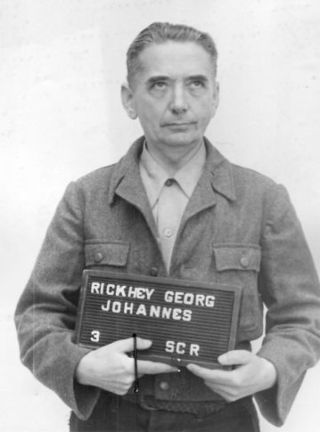
Georg Johannes Rickhey was a German engineer and the general director of Mittelwerk GmbH in Dora-Mittelbau.
The Field Information Agency, Technical (FIAT) was a US Army agency for securing the "major, and perhaps only, material reward of victory, namely, the advancement of science and the improvement of production and standards of living in the United Nations, by proper exploitation of German methods in these fields"; FIAT ended in 1947, when Operation Paperclip began functioning.
William August Schulze was a German-American rocket scientist and Operation Paperclip hire. After involvement with the development of numerous German rockets during World War II, he became one of the first seven Operation Paperclip scientists and engineers to enter the United States, where he served in directing the PGM-11 Redstone program.











